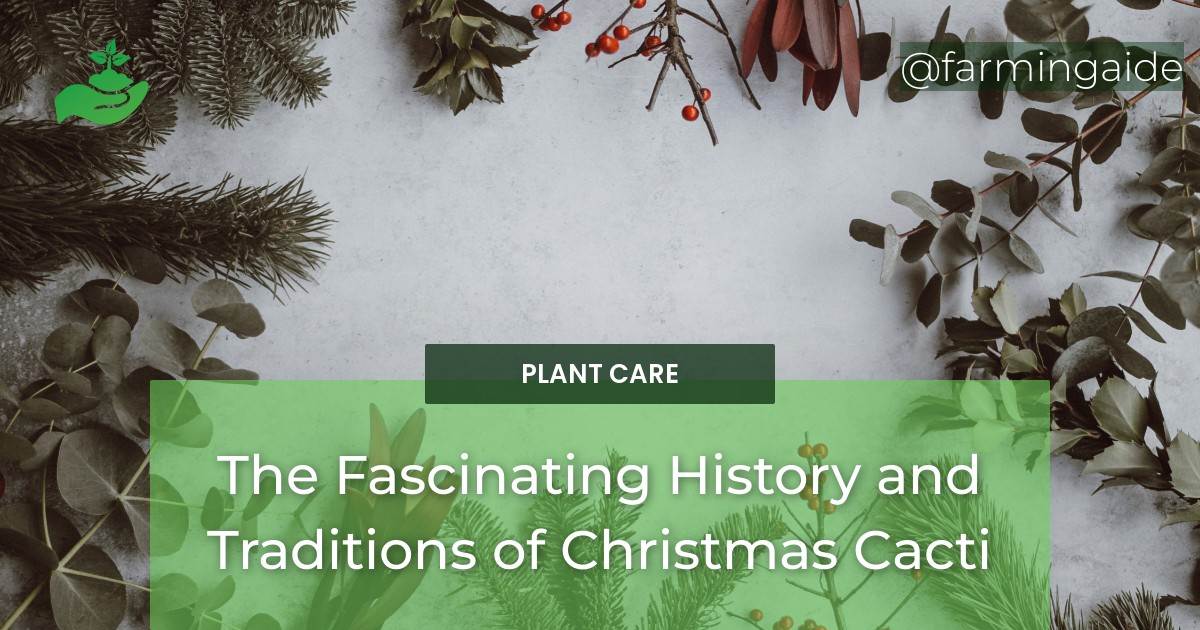The holiday season is a time for traditions, and one plant that has become synonymous with Christmas is the Christmas cactus. This unique and beautiful plant has a fascinating history and cultural significance that goes beyond its festive appearance. In this article, we will explore the origins of Christmas cacti, their cultural significance, and how to care for them in your own sustainable garden. By the end, you will have a deeper understanding and appreciation for this beloved holiday plant.
About Christmas Cacti
Christmas cacti, also known as Schlumbergera, are a group of cacti native to the coastal mountains of Brazil. They are epiphytes, meaning they grow on other plants rather than in soil. This unique adaptation allows them to thrive in the humid and shady conditions of their natural habitat. Christmas cacti are known for their flat, segmented leaves and vibrant blooms that range in color from pink and red to white and yellow.
Brief Overview of Article
In this article, we will delve into the history and traditions surrounding Christmas cacti. We will explore their origins, cultural significance, and how to care for them in your own sustainable garden. By the end, you will have a comprehensive understanding of this beloved holiday plant and be equipped with the knowledge to grow and care for it in your own home.
Origins of Christmas Cacti
Christmas cacti are native to the coastal mountains of Brazil, where they were first discovered in the early 1800s. They were initially brought to Europe by a French botanist, who shared them with his colleagues and friends. From there, they made their way to America, where they quickly gained popularity as a holiday plant. The role of plant collectors and botanists in introducing Christmas cacti to the world cannot be overstated, as without their efforts, this plant may have remained unknown outside of its native habitat.
Cultural Significance of Christmas Cacti
Christmas cacti have a long history of cultural significance, particularly in relation to the holiday season. In Christianity, the plant is believed to symbolize the birth of Jesus, with its vibrant blooms representing the star of Bethlehem. It is also commonly used in holiday decorations, with its bright colors and unique appearance adding a festive touch to any home. In addition, there are many folklore and traditions surrounding Christmas cacti, such as the belief that it brings good luck and prosperity to the household.
Plant Selection and Cultivation
When choosing a Christmas cactus, it is important to select the right variety for your climate and growing conditions. There are three main varieties: Thanksgiving, Christmas, and Easter cacti, each with slightly different blooming times. Optimal growing conditions for Christmas cacti include bright, indirect light and well-draining soil. Repotting and propagation can also help promote healthy growth and blooming.
Soil Management and Composting
Proper soil management is crucial for the health and growth of Christmas cacti. These plants require well-draining soil, as they are susceptible to root rot if left in standing water. Suitable soil amendments and fertilizers can also help provide the necessary nutrients for healthy growth. Composting is also an excellent way to maintain a sustainable garden and provide natural fertilization for your Christmas cacti.
Pest and Disease Control
Like any plant, Christmas cacti are susceptible to pests and diseases. Common pests include mealybugs, scale insects, and spider mites. Natural and organic methods, such as neem oil and insecticidal soap, can be used to control these pests. Prevention and management techniques, such as proper watering and cleaning, can also help keep your Christmas cacti healthy and pest-free.
Sustainable Gardening Practices
Sustainability is becoming increasingly important in gardening, and Christmas cacti can play a role in creating a more eco-friendly garden. These plants are low maintenance and can thrive in a variety of conditions, making them a great addition to any sustainable garden. Tips for eco-friendly gardening with Christmas cacti include using natural pest control methods and incorporating them into crop rotation plans.
Seasonal Planning and Crop Rotation
Proper seasonal care is essential for the health and blooming of Christmas cacti. This includes adjusting watering and light levels as the seasons change. In addition, incorporating Christmas cacti into crop rotation plans can help maintain plant health and prevent disease. By rotating your plants, you can also ensure that your Christmas cacti have optimal growing conditions throughout the year.
Conclusion
In conclusion, Christmas cacti have a rich history and cultural significance that make them a beloved holiday plant. By understanding their origins, cultural significance, and how to care for them in your own sustainable garden, you can fully appreciate the beauty and uniqueness of these plants. Whether you are a seasoned gardener or just starting out, Christmas cacti are a wonderful addition to any home and can bring joy and beauty to your holiday season.


